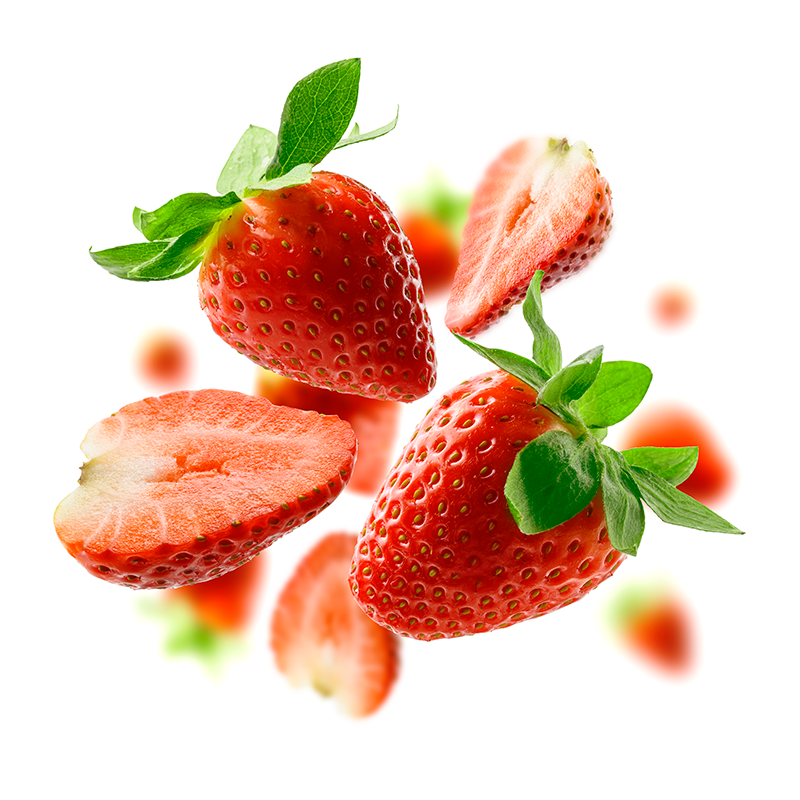Discover the Best Techniques for Reducing Pesticide Residues
Pesticides are widely used in agriculture to protect crops from pests and diseases. However, their residues on fruits and vegetables can pose health risks to consumers. This post explores the effectiveness of commercial and homemade washing agents in removing pesticide residues from apples, strawberries and leafy greens. The information presented here is based on the findings of three key studies (PMID: 29067814, PMCID: PMC: 4688301, PMID: 36141043).
Effectiveness of Washing Agents on Apples
A study published at the Journal of Agricultural and Food Chemistry (PMID: 29067814) investigated the removal of pesticide residues from apples using different washing agents. The study focused on two pesticides, thiabendazole and phosmet, using Surface-enhanced Raman scattering (SERS) mapping and liquid chromatography tandem mass spectrometry (LC-MS/MS) to measure the effectiveness.
Key Findings:
- Sodium Bicarbonate (NaHCO3) Solution:
- Most effective in removing surface residues.
- Completely removed thiabendazole and phosmet surface residues in 12 and 15 minutes, respectively, with a 10 mg/mL NaHCO3 solution.
- Found to be more effective than tap water or Clorox bleach.
- Penetration of Pesticides:
- Despite surface washing, 20% of thiabendazole and 4.4% of phosmet penetrated into the apples.
- Thiabendazole, being systemic, penetrated deeper into the peel than phosmet.
Implications:
The study highlights that while NaHCO3 is effective for surface residue removal, it is not sufficient for residues that penetrate the apple peel. For complete removal, peeling the apple is recommended, though it results in the loss of beneficial bioactive compounds present in the peel.


Effectiveness of Washing Methods on Strawberries
Soft fruits like strawberries present another challenge due to their delicate surface and high porosity. A study (PMCID: PMC4688301) evaluated the effects of different washing and processing methods—tap water, ozonated water, ultrasonic cleaning, and boiling—on 16 pesticide residues in raw strawberries.
Key Findings:
-
Ozonated Water reduced pesticide residues by 36.1% to 75.1%, outperforming tap water (19.8% to 68.1%).
-
Boiling showed reductions ranging from 42.8% to 92.9% across most compounds.
-
Ultrasonic Cleaning proved particularly effective, achieving up to 91.2% removal across all tested pesticides.
These results demonstrate that ultrasonic cleaning and boiling are the most effective treatments for reducing pesticide residues in strawberries, contributing to significantly lower health risk exposure.
However, note that strawberries are soft and porous fruits, and thus boiling can significantly degrade water-soluble and heat-sensitive vitamins, such as vitamin C and folate, especially in the skin where antioxidants are concentrated. As a result, while boiling may enhance food safety by reducing pesticide residues, it can also compromise the fruit’s nutritional value.
Effectiveness of Washing Agents on Leafy Vegetables
Leafy vegetables present a unique challenge due to their large surface area and inability to be peeled. A comprehensive study (PMID: 36141043) compared various washing methods on five types of leafy vegetables: lettuce, perilla leaves, spinach, crown daisy, and ssamchoo.
Key Findings:
- Reduction by Washing Methods:
- Running water achieved the highest reduction (77.0 ± 18.0%).
- Boiling showed a significant reduction (59.5 ± 31.2%).
- Detergent washing had the lowest reduction (43.7 ± 14.5%).
- Reduction by Vegetable Type:
- Lettuce had the highest reduction (67.4 ± 7.3%).
- Ssamchoo had the lowest reduction (40.6 ± 12.9%).
Implications:
These findings emphasize the importance of thoroughly washing leafy vegetables, particularly with running water, to minimize pesticide residues. Boiling also proves effective but may not be suitable for all types of leafy vegetables due to potential nutrient loss.

Conclusion
Both studies underline the critical role of effective washing techniques in reducing pesticide residues on fruits and vegetables. For apples, a sodium bicarbonate solution is recommended for surface cleaning, while peeling is necessary for complete residue removal. For leafy vegetables, thorough washing with running water is most effective. Consumers should be aware of these methods to reduce their pesticide exposure and ensure safer consumption of fresh produce.
What science suggests:
- For Apples:
- Wash with a sodium bicarbonate (baking soda) solution for at least 12-15 minutes.
- Peel apples to remove any pesticide residues that have penetrated the skin.
- For soft fruits like strawberries
- Ultrasonic cleaning achieves removal rates of over 90%.
- Consider boiling if the vegetable type allows, but be aware of potential nutrient loss.
- For Leafy Greens:
- Wash thoroughly under running water to achieve the best reduction in pesticide residues.
- Consider boiling if the vegetable type allows, but be aware of potential nutrient loss.
Although sodium bicarbonate was not evaluated in the strawberry study, its proven effectiveness on apples suggests it may hold promise for strawberries as well. Given strawberries’ acidity and delicate structure, prolonged soaking (e.g., 12–15 minutes) like that used for apples might not be suitable. The acid-base interaction between strawberries’ natural acids and the alkaline baking soda could lead to partial breakdown of the fruit’s surface, making it softer or mushy. Shorter exposure times using a diluted solution may offer a safer, gentler alternative for surface cleaning — but no studies to date have scientifically validated the use of sodium bicarbonate on strawberries.
By adopting these washing techniques, you can significantly reduce your intake of pesticide residues, ensuring that the fruits and vegetables you and your family consume are as safe and healthy as possible.









